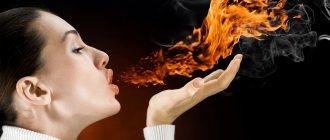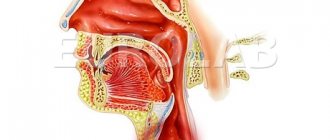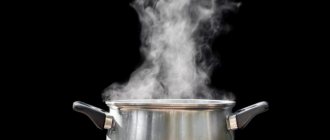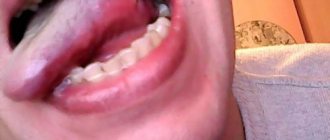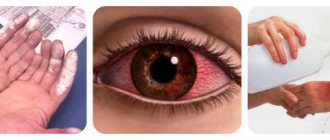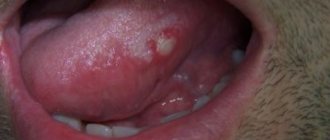Injuries to the mucous membranes are among the most painful. Chemical or thermal burns of the tongue are typical for young children and are less common in adults. Damage occurs due to ingested chemicals. There are cases when the victim burned the mucous membrane of the tongue with hot tea.
In the article we will look at the degree of damage, the main causes of occurrence, and what to do if the tongue tissue is burned.
Causes of tongue burn
You can burn your tongue for various reasons.
The most common thermal burn is on the tongue. Minor injury occurs during ingestion of excessively hot food or liquid. Probably everyone has burned their tongue with hot tea or boiling water at least once in their life and has an idea about this type of injury.
Injury to the mucous membrane can also occur at the time of contact with chemical components, namely:
- acid;
- alcohol;
- alkali;
- petrol.
In rare cases, damage may occur due to contact with electric current or during radiation exposure.
How dangerous is it and how to treat a tongue burn?
A tongue burn is a relatively rare (compared to other burn injuries) household injury that occurs upon contact with very hot foods or drinks, or aggressive chemical compounds. The damage is accompanied by a violation of the integrity of the mucous membrane of the oral cavity and the muscle tissue of the tongue, causing significant discomfort and pain.
Causes
Damage can be caused by various factors. Depending on the type of damaging agent, a tongue burn can be:
- thermal (too hot tea or other liquid, uncooled food, steam if the rules for inhalation are not followed);
- chemical (acid, alkali, alcohol);
- electrical (in case of electric shock, for example, due to equipment malfunction during dental or physiotherapeutic procedures);
- radiation (becomes the result of radiation, more common in patients undergoing radiation therapy for cancer).
The most common is thermal burn of the tongue.
Chemical damage is not diagnosed so often (mainly with caustic soda, sulfuric, hydrochloric, acetic acid, less often with phenol, iodine, sublimate).
Acid burns lead to the formation of a dense brown crust (scab) on the surface of the wound, which prevents the penetration of the caustic substance into deeper structures.
When burned with alkali, a soft whitish scab is formed, through which the aggressive compound easily penetrates into the deep layers of tissue. Because of this, an alkali burn is more dangerous than an acid burn.
Damage to an organ by electric current or harmful radiation is practically never encountered.
Only 30% of victims are adults; in the remaining 70% of cases, thermal and chemical burns of the tongue are diagnosed in children under 10 years of age.
Tongue burns in children are the result of parental carelessness: failure to comply with safety measures and storage rules for caustic chemicals, household cleaning products, and children’s unhindered access to hot objects and electrical appliances. Adults are exposed to injury due to inattention and negligence, and in some cases there is deliberate ingestion of concentrated chemicals for the purpose of suicide.
Symptoms
Burns on the tongue are accompanied by damage to the mucous membrane and muscle tissue and cause quite unpleasant symptoms, including:
- severe burning sensation;
- redness of the damaged area;
- painful sensations during conversation, eating;
- difficulty breathing (with a severe burn);
- increased salivation;
- whitish coating on the tongue;
- dry mouth;
- impaired taste sensitivity (for a superficial burn it is restored after 1-3 days, for a deeper burn – after 10-14 days).
As a rule, with such injuries, not only the tongue is damaged. There is a burn under the tongue, on the mucous membrane of the gums and palate, and pharynx.
Damage to the mucous membrane under the tongue often leads to the development of a pronounced inflammatory process, since it is in this area that many salivary glands are located, and the tissues are the most vulnerable. In this case, it is better to consult a doctor.
Otherwise, due to improper treatment, the functions of the salivary glands may not be restored, which will lead to various digestive disorders.
Degrees
OLYMPUS DIGITAL CAMERA
Depending on the depth of tissue damage, there are 4 degrees of damage.
- Damage to the surface layer of the mucous membrane, in which only slight swelling and redness of the burned area occurs. The tissues heal within a few days even without special treatment.
- Damage to the deeper layers of the mucous membrane, accompanied by the appearance of transparent bubbles on the surface of the organ. It is characterized by a favorable course and heals with regular, frequent rinsing of the mouth with antiseptic solutions.
- Severe damage to deep structures, accompanied by the appearance of ulcers and erosions, tissue necrosis. Even with timely and competent treatment, complications can develop, the most common of which is a decrease in the sensitivity of receptors and tissues of the tongue.
- The most severe damage with partial or complete charring of tissue, often leading to death. But even if the victim’s life can be saved, it is not possible to restore the structure and functions of the organ.
Source: https://travms.ru/ozhog-yazyka.html
What it is?
The spots that appear on the tongue differ in color and size. It is important to understand what exactly is hidden under the usual redness on the tongue and is it worth worrying about?
The first thing you need to pay attention to is the color of the formation and the presence of plaque. As you know, the normal color of the tongue is pink. Also, an accumulation of small plaque may be observed on the organ, which is explained by non-compliance with generally accepted hygiene rules.
It is worth noting that plaque can also form due to various pathologies that affect the normal functioning of the gastrointestinal tract. In this case, it would be wise to adjust your daily diet.
As mentioned earlier, red spots can be of various types, so it is worth taking a closer look at the causes of this phenomenon.
Types of tongue burns
Burn injuries can be grouped into 4 groups:
- Thermal burns . They occur when the surface of the tongue is exposed to food and liquid at high temperatures.
- Chemical. Injuries occur due to negligence when coming into contact with reagents, chemicals, harmful products and household chemicals.
- Electrical . Damage occurs when an electric shock occurs.
- Radiation . Burns occur as a result of radiation.
Diagnostics
Since red formations on the surface of the mucous membranes can occur due to various reasons and pathologies, diagnostic measures cannot be avoided in this case. First of all, the doctor conducts a visual examination of the affected areas and, if necessary, performs a palpation procedure.
The patient also needs to undergo additional examinations from specialists such as a gastroenterologist, allergist, immunologist, and so on. For a more accurate diagnosis, the doctor conducts a thorough examination of the tumor, clarifies the patient’s complaints and collects anamnesis.
During a visual inspection, the following indicators are determined:
- plaque;
- shade of the neoplasm;
- the presence of ulcers and erosions;
- structure of the affected area;
- presence of itching.
Read how to use iodine for rashes on the oral mucosa. Chemical filling or light filling. More details here.
Severity
Based on the scale and depth of the violation of the integrity of the mucous membrane of the tongue, burn degrees of damage are distinguished:
- First . It is characterized by a minor disturbance, accompanied by mild swelling and redness. It is necessary to rinse the mouth with an antiseptic.
- Second . The average form of disorders is characterized by the appearance of transparent bubbles. You should contact a burn surgeon to prescribe therapy.
- Third . The degree is characterized by severe disorders with the formation of ulcers, even tissue necrosis is possible. A mandatory consultation with a combustiologist is required to prescribe a therapeutic course in combination with painkillers.
- Fourth . The most severe form of injury that is not life-threatening. As a result, partial or complete charring of the tongue as a whole.
What to do if your tongue is burned and how to treat it correctly?
Tongue burns in medical practice most often occur in children or occur in adults due to negligence. Treatment of burn injury is carried out depending on the severity of the injury and the characteristics of the traumatic factor.
Photo 1. Children's mischief or carelessness often results in injuries. Source: Flickr (Paolo Ræli).
Causes and types of tongue burns
There are four main reasons that provoke a burn injury to the tongue:
- thermal injury caused by high-temperature food or drinks, hot steam and fire entering the oral cavity;
- chemical damage provoked by toxic substances of chemical origin;
- electrical burn , resulting from exposure of the tongue to electric current of varying strength;
- radiation injury of the tongue caused by exposure to radiation.
The level of severity of the burn injury received can be represented by four degrees, which differ in symptoms, which affects the regimen of prescribed therapy.
Note! The most common causes of tongue burns include chemical and thermal injuries resulting from contact with an aggressive environment.
Thermal burn
The main factors that provoke the occurrence of thermal burn injury are the following:
- hot steam;
- boiling or hot liquids or food;
- open flame;
- objects are too hot.
Thermal burn injuries occur under the influence of high temperature, and are characterized by varying degrees of severity , ranging from hyperemia with slight swelling, and ending with deforming coagulation of the mucous membrane with the formation of blisters or erosive surfaces.
Chemical burn
Chemical burn injury on the mucous membrane of the unpaired bottom outgrowth of the oral cavity most often occurs upon contact with the following components:
- highly concentrated acids;
- strong alcohol-containing liquids;
- caustic alkaline substances.
Exposure to acid is considered less dangerous than alkaline damage , due to the rapid formation of a scab, which prevents the deepest penetration of chemicals.
Degree of injury
The scale and depth of violations of the integrity of the tissues of the tongue make it possible to correctly assess the degree of injury received by the victim:
- the first degree is accompanied by minor disturbances, mild swelling and mild hyperemia;
- the second degree is characterized by the formation of blisters with transparent or slightly yellowish contents;
- the third degree is characterized by the formation of ulcerations and tissue necrosis, with severe pain.
The most severe is fourth degree injury , manifested in the form of partial or complete charring of a significant part of the tongue.
Note! According to medical statistics, about 2/3 of the total number of victims of tongue burns are children of preschool or early school age who are injured due to inattention and non-compliance with safety rules.
Signs of a tongue burn
The general symptoms of a burn injury vary depending on the type of damaging factor, as well as the age characteristics of the patient and the severity of the injuries:
- disorders affecting the upper layers of the surface of the tongue - burning sensation, mild soreness, swelling and redness ;
- injuries to the tissues located under the mucous membrane - a noticeable feeling of pain and burning, the appearance of small blisters and noticeable hyperemia, impaired taste ;
- a severe burn affects the deepest layers, causes a pronounced feeling of pain , is accompanied by the appearance of perforation in the tongue, a feeling of numbness and noticeable necrotic changes .
Symptoms may also include blood, bitter or metallic tastes, dryness, or increased salivation . The most severe injuries are dangerous to the health and life of the patient, so their treatment is carried out exclusively in a hospital setting.
A visual medical examination, as well as a survey of the victim, allows you to determine the degree of damage and correctly designate a scheme of therapeutic measures. In some cases, it is necessary to exclude a combined burn injury, so additional studies are prescribed.
Treatment of a tongue burn
After receiving a burn injury, rinse the mouth repeatedly with cool, clean water .
Thermal damage requires treatment of the mucous membrane with antiseptic solutions based on furatsilin, potassium permanganate or hydrogen peroxide , which will prevent pathogenic microflora from entering the wounds.
Severe pain is eliminated painkillers or analgesic sprays.
Photo 2. If the tongue is not badly burned, you can do without the help of a doctor, in other cases you should urgently go to the clinic. Source: Flickr (ttaylormmills)
Competently and timely first aid for a burn injury to the tongue is a guarantee of proper and fastest rehabilitation of the victim.
Folk remedies
Popular and time-tested folk remedies are not only publicly available, but also quite effectively alleviate the condition of a tongue burn :
- freshly squeezed aloe juice;
- vitamin E oil;
- flower honey;
- Greek yogurt;
- milk;
- oak bark decoction;
- infusion of chamomile;
- decoction of plantain seeds.
An excellent wound healing effect can be obtained by lubricating the affected mucous membranes with sea buckthorn or lavender oil.
Features of the treatment of chemical burns
Tongue injuries of chemical origin require special therapeutic measures aimed at neutralizing the damaging factor:
- in case of alkaline lesions, a solution with the addition of citric, grape or acetic acid is used to rinse the mouth;
- damage by any acid requires the use of a standard soda solution to rinse the mouth;
- quicklime can be neutralized quickly enough with 20% sugar syrup;
- areas of the mucosa affected by carboxylic acid are treated with glycerin.
Burns caused by poisonous plants can pose an increased danger to the life of the victim, so qualified medical care is mandatory in this case.
Prevention of tongue burns
To prevent household injury in the form of a tongue burn, it is necessary to control the availability of chemicals , and also avoid consuming too hot food or drinks.
You can avoid burn injuries by following safety precautions when working with electrical appliances.
It should be noted that throughout the entire recovery period, the consumption of foods and drinks with high acidity is strictly prohibited, which will prevent unwanted irritation of injured mucous membranes in the oral cavity and accelerate regeneration processes.
Source: https://glavtravma.ru/ozhogi/yazyk-100
Burning mouth syndrome
If you have BMS, you will benefit from the same treatment options that apply to treating first-degree burns.
Although there is no medically approved treatment specifically for BMS, treatment professionals have found that the following treatments are relevant in specific situations: medications (lidocaine, doxepin, and clonazepam), as well as prescription medications, such as gabapentin, SSRIs and amitriptyline, there are also procedural treatments such as alpha lipoic acid, cognitive behavioral therapy, meditation and other relaxation methods.
Treating secondary causes is the key to eliminating symptoms. For example, if the medications you currently take cause dry mouth, your doctor may prescribe an alternative.
What causes meningitis and why is it dangerous?
If acid reflux or GERD is causing stomach acid to return to your mouth, your doctor may prescribe medications such as omeprazole to reduce stomach acid production.
First aid and treatment
If the tongue is affected to varying degrees, proper and timely assistance should be provided:
- In the first minutes after the injury, it is necessary to rinse your mouth with cool or cold running water for 30 minutes. It is strictly forbidden to rinse your mouth after a burn with warm water. If there is no access to water. You can use a piece of ice or chilled food.
- In case of thermal injury, use antiseptics to sanitize the oral cavity.
- Take painkillers if pain occurs at the affected area.
If the pain occurs as a result of a minor burn, then a piece of ice, sugar, honey, yogurt, aloe vera, deep long breaths, menthol lozenges and chewing gums and toothpaste will help reduce it.
Treatment of thermal burn of the tongue
In case of thermal injury, a number of necessary measures should be taken:
- rinse your mouth with cold water or apply ice;
- sanitize with a weak solution of potassium permanganate, furatsilin (dilute according to instructions), hydrogen peroxide or chamomile decoction for 10-15 minutes;
- take an additional complex of vitamins for faster recovery.
If the pain does not go away, it is recommended to seek medical help.
How to treat a chemical burn
In case of injury to the tongue by certain chemical components (as in the photo below), it is necessary:
- When damaged by alkali. Rinse your mouth with acetic or citric acid, neutralize the alkali.
- In case of acid contact. Rinse your mouth with a soda solution (1 tsp per 600 ml of water). If the reagents get into the gastrointestinal tract, it is imperative to rinse the stomach and seek qualified help.
- Quicklime. It is necessary to neutralize with a 20% sugar solution.
- In case of contact with carboxylic acid, glycerin will help.
Poisonous plants and insects can also cause burns. In such cases, it is necessary to seek qualified help.
Traditional methods of treatment
It is recommended to use folk remedies only for mild burns. The most widely used are:
- Cold water . Or apply any other cold at the first manifestations of a burn.
- Sugar . Relieves pain. Take into mouth and hold until completely dissolved.
- Yogurt . Place a small amount of cold yogurt in your mouth and hold it for a while.
- Honey _ Perfectly eliminates discomfort. Keep in mouth for 5 minutes.
- Vitamin E. Accelerates the healing process and restoration of tissue structure.
- Aloe juice . relieves pain and inflammation. Should be applied to the damaged area.
- Lavender oil . Helps against pain and swelling.
Degrees of tongue burn and methods of treatment
Tongue burns, unlike other injuries caused by a burning agent, are statistically not often diagnosed. In fact, this household injury is very common and occurs in people who consume hot food or drinks.
Since such a thermal burn is shallow and goes away within a few days, people do not often go to the doctor, which is reflected in the statistics. Damages of a chemical, radiation and electrical nature are much less common.
Treatment depends on the type of burning substance or object, the extent of the burn, and the age of the patient.
Types of burn
Depending on the type of burning agent, tongue damage can be:
- Thermal. Occurs under the influence of high temperatures from liquid, steam, food. You can get it by eating hot food or tea. Steam burns are typical when inhalation techniques are not followed.
- Chemical. Damage is usually associated with exposure to acids and alkalis. A chemical burn of the tongue is considered the most severe of all possible burns in this area. The most common agents are acetic, hydrochloric, sulfuric acid, phenol, and iodine.
- Luchev. Typically for patients who have undergone radiation procedures for oncology treatment.
- Electric. Occurs under the influence of electric current when dental equipment breaks down.
Chemical burns are characterized by the appearance of a scab. If acid penetrates, the formation is quite dense and does not allow damage to deep tissues. With an alkaline burn, the scab is white and soft, which makes the tissue more susceptible to the action of the aggressor. Therefore, the penetration of alkalis is very dangerous and has serious consequences.
More often the tongue is burned by a hot drink or dish. Children usually suffer from this, especially at a young age, when they do not yet test the temperature of food before eating.
Poorly cleaned household chemicals can also cause burns in children.
In general, a child, exploring the world, strives to touch and try everything, so to minimize the risk of a burn for a baby, you should adhere to safety measures and monitor the baby.
Degree of damage
Taking into account the depth of penetration of the agent and the type of substance, 4 degrees of burns are distinguished:
- Only the superficial layers of the mucosa are involved. Minor swelling and redness may be visualized. Healing occurs after a few days.
- The burn is deeper. Distinct bubbles appear on the surface of the organ. They heal in about 1-2 weeks, subject to oral hygiene and frequent mouth rinsing.
- At this stage, damage to deep structures is visualized with the formation of ulcers, erosions, and necrosis. As complications, a decrease in the sensitivity of taste buds may occur.
- At the last stage, charring of the tissues cannot be avoided. It can be complete or partial. It is impossible to restore functionality and structural features. Significant charring of large areas of the body can be fatal.
Typically, tongue burns are diagnosed in the first two stages.
Symptoms
Depending on the severity of the pathology, the patient may be concerned about:
- Burning.
- Hyperemia.
- Pain, especially while eating or talking.
- Difficulty breathing.
- Increased salivation.
- Plaque on the tongue.
- Dryness and cracks on the surface of the organ.
- Impaired taste and perception of food.
If the burn is shallow, then improvements are observed within 2-3 days; for serious damage, treatment can last more than 2 weeks.
Since when a burning agent enters the oral cavity, not only the tongue, but also other nearby tissues are affected, if the integrity of a muscle organ is damaged, you should immediately consult a doctor.
First aid
If your tongue is burned by boiling water , then you must:
- Rinse your mouth with cool, but not ice-cold, water. You need to do the procedure continuously for half an hour.
- Next, to exclude infection, sanitation is carried out with aqueous Chlorhexidine, Miramistin, and Furacilin solution.
- If you have pain, you can take Ibuprofen, Analgin.
- Chemical burns require special handling. In case of acid damage, it is necessary to oxidize the cavity with a soda solution. It is enough to dilute 1 teaspoon of powder with 250 ml of water. Alkalis are quenched with citric or acetic acid in a dilution of 1 hour. 300 ml spoon. water. If an aggressive substance has entered the body, then gastric lavage is performed.
- Further treatment is prescribed in accordance with the degree of the burn and existing complications.
Treatment
When a tongue burn is received, how to treat it depends on the degree of damage, the composition or nature of the active burning substance, and the age of the patient.
General recommendations include:
- Diet food. It is necessary to exclude irritating products. This includes spicy, salty, sweet, sour dishes, carbonated drinks.
- Rejection of bad habits. Smoking and alcohol greatly irritate the mucous surfaces of the epidermis.
- Maintaining temperature conditions. Only warm food can be eaten.
- Rinse the mouth up to 6 times a day. This helps prevent infection and wash away aggressive media from the surface and must be done after every meal.
- Refrain from talking.
Drug treatment
In a hospital, a tongue burn is treated:
- Chlorophyllipt. An aqueous solution and a spray are available for sale. The drug has a bactericidal and bacteriostatic effect. The oral cavity is treated up to 4 times a day.
- Ectericide. Has a disinfectant and antiseptic effect. Allowed even for purulent inflammations. In severe conditions, the affected surface should be treated 2 times a day; if improvement occurs, the frequency can be reduced to 1 time a day.
- Miramistin. The antimicrobial drug is used as a rinse and in the manufacture of lotions. Can be used up to 3 times a day.
- Chlorhexidine aqueous. The solution has an antiseptic and bactericidal effect. You can irrigate or rinse your mouth with it up to 3 times a day.
Tissue regeneration improves when using:
- Solcoseryl. Helps well with thermal damage.
- Karotolina. Oily vitamin extract helps accelerate tissue regeneration. The surface can be treated several times a day.
- Panthenol in the form of an ointment.
- Spray Olazol. The effect is explained by its rich composition including antibiotics and antiseptics.
ethnoscience
If the burn is small, it can be treated at home.
For this use:
- Vegetable oils. Sea buckthorn, olive, and corn are popular. They are used undiluted for lotions, moistening a clean cloth and placing it on the affected area for up to 15-20 minutes. Do not apply oils immediately after a burn.
- Camomile tea. 1 tbsp. pour boiling water over a spoonful of herbs and leave for about 20 minutes. You can use the infusion as a mouth rinse.
- Oak bark decoction. 15−20 g of crushed product is poured into 250 ml of boiling water and kept in a water bath for about 15 minutes. Straining is used for rinsing.
2nd, 3rd, 4th degree burns cannot be treated independently without consulting a dentist or surgeon.
Treating a burned tongue at home
Prohibited events
When receiving a burn, it is important not only to provide assistance to the victim correctly and in a timely manner, but also to know the prohibited actions.
You can not do it this way:
- Touch the burned area with your hands and various objects.
- Independently remove plaque from the tongue formed due to injury.
- Pop blisters.
- Independently use drugs of dubious origin or those that are not used to treat dental problems.
- Neglect medical treatment at stages 2, 3, 4 of the disease.
A tongue burn that occurs at home when preparing or consuming hot foods and drinks usually goes away on its own and does not require medical correction.
If blisters appear on the affected surface or penetration of acid or alkali occurs, the condition requires consultation with a doctor. Home methods can be safely used only in the first stage of the pathology; starting from the second, therapy is carried out under the supervision of a specialist and should not replace the main course of treatment.
Source: https://mymedic.clinic/termicheskie/ozhogi/ozhog-yazyka.html
Contraindicated actions
When self-therapy, it is important not to do harm and follow some precautions:
- It is forbidden to touch the tongue with dirty hands or other non-sterile objects.
- It is strictly forbidden to treat the burned surface with brilliant green or iodine. These solutions are very aggressive and can create a chemical burn on the mucous membrane. In addition, swallowing them is dangerous to health.
- When treating the tongue and oral mucosa, you cannot use the same ointments as for external use . Do not forget that the product is absorbed and swallowed along with saliva, entering the esophagus and stomach. The composition of many external preparations is unsafe and can cause poisoning of the body.
- After injury, it is not recommended to consume hard, sour, salty and hot foods, fruits, vegetables, berries, citrus fruits, and juices. Their active substances and rough structure will have a painful effect on damaged tissues and prevent their healing.
- In case of serious injury, long-term non-healing wounds, severe pain and inflammation, you should not self-medicate. You should definitely consult a doctor.
Necessary actions in case of external and internal burns
Vinegar burns are classified as chemical injuries. It occurs when acid gets on the skin or inside the body. Moreover, the higher the concentration of vinegar, the more dangerous the burn.
The location and severity of the injury is of great importance. There are 2 types of vinegar damage - external and internal. In both cases, in order to neutralize the effect of the acid, it is necessary to rinse and transport the patient to a medical facility. However, the algorithm for providing first aid for external and internal burns is different.
What to do if the skin and mucous membrane of the eye is burned with vinegar
In case of external injuries, vinegar gets on the skin or mucous membrane of the eyes. In the latter case, particularly severe pain occurs.
First aid for burns with vinegar or its derivatives of the skin and mucous membrane of the eyes:
- Remove clothing that has been exposed to aggressive acid (if the skin is damaged), as well as jewelry;
- Rinse the damaged area with tap water. Keep the affected part of the body under the stream for 20 minutes or more. This is an important measure that will help wash the vinegar from the skin and reduce the intensity of the pain;
- To neutralize the effect of the acid, prepare an alkaline solution from soap or soda. It’s great if the victim has a loved one with him who will prepare such a solution while he washes the burn site. If there is no one nearby, then you need to prepare the neutralizer yourself after the first rinse. In this way, rinsing is carried out when acid comes into contact with the skin or mucous membranes of the eyes;
- Then a wet compress is applied to the affected area , which will further reduce the negative effects of vinegar;
- Then the burn site is treated with antiseptics in the form of creams, ointments or gels. These medications will help reduce inflammation and pain;
- Then you need to transport the victim to the hospital or call an ambulance, especially if the injury is severe.
Doctors will assess the extent of the damage, treat the damaged area with special medications and formulate a treatment strategy.
Necessary measures for burns of the digestive tract and respiratory tract
An internal burn with vinegar is dangerous not only to health, but also to human life. The fact is that acid burns the walls of all internal organs through which it passes. To avoid dangerous consequences, you need to provide first aid to the victim as quickly as possible :
- The first thing to do if you or someone close to you has swallowed vinegar is to call doctors or transport the patient to a medical facility yourself. Only specialists will be able to correctly assess the condition of the victim and take the necessary measures;
- While waiting for the ambulance, you need to rinse your stomach with regular boiled water, then with a weak solution of baking soda, and then again with water. This will help neutralize the acid.
Further assistance is carried out by doctors.
If a person has drunk a large amount of highly concentrated acid (as sometimes happens during a suicide attempt), then rinsing the stomach is prohibited.
Otherwise, complications may arise that are incompatible with life. Then only doctors can help, the main thing is to take the victim to the hospital without delay.
Unfortunately, the process of tissue destruction of the digestive organs does not stop even after the source of the burn is eliminated. That is, in the first hours, and sometimes days, it is difficult to determine the exact degree of damage. The exact diagnosis will be known 7–10 days after instrumental studies.
What complications can there be?
In cases of untimely assistance after a burn and lack of treatment, infections can occur on the injured tongue, leading to an inflammation process - glossitis.
If the burn is severe and the area of damage is large, then taste buds and sensitivity may be impaired in the future, not only during therapy, but also after healing.
Trauma to the oral cavity is characterized by decreased appetite, its absence or inability to eat. This leads to exhaustion, disruption of the digestive system, aggression and insomnia.
What not to do when providing first aid
When providing assistance after a vinegar burn, people may make common mistakes:
- Treat the burn with oil or other fat-based products. Then a thin film will form on the damaged area and the burn will spread inward;
- Immediately treat the burned area with anti-burn agents, for example, Panthenol, Olazol. First of all, you need to cool the damaged area and neutralize the effect of the acid, and then use pharmaceutical preparations. In addition, external agents can only be used for 1st degree damage;
- Tear off stuck clothing from the burned area. If the fabric is stuck to the wound surface, then there is no need to forcibly tear it off, it is better to thoroughly wet it with water so that it comes off, or entrust it to doctors;
- If acid is swallowed, do not artificially induce vomiting, as repeated exposure to it will intensify the injury. If vomiting occurs on its own, then do not hold it back, just continue to drink water;
- If there is a wound on the burned area , then rinsing it with water is prohibited; apply a bandage and cool it from above.
If the mucous membrane of the eyes is burned, it is strictly forbidden to rub them, otherwise the chemicals will penetrate deep into the tissues of the eye, causing damage. If a burning sensation occurs, immediately rinse the mucous membrane with plenty of water and rush to the doctor.
What absolutely should not be done
While the mucous membrane of the tongue is recovering from burns, several important rules must be followed:
- Following a diet, eating sour, spicy, salty foods irritates damaged mucous membranes and increases pain. In addition, you should avoid hard, tough foods: crackers, fried foods, chips.
- The burned surface should not be lubricated with alcohol or anti-burn ointments for external use, as they can have a toxic effect if swallowed.
- You should not open the blisters yourself; there is a high risk of infection.
It is known that the best treatment is prevention, but no one has yet been able to completely protect themselves from trouble. Therefore, it is worth keeping in your home medicine cabinet medications that can quickly and effectively relieve pain and swelling.
Source: zubnoimir.ru
Prevention and general recommendations
It takes a long time to restore the functions of the tongue after injury. Therefore, in order to speed up the regeneration process, it is necessary to follow certain recommendations:
- make lotions from medicinal oils (fish, rosehip, Retinol, Carolin);
- exclude sour, spicy and salty foods, tropical fruits, citrus fruits, and solid foods from the diet;
- regularly rinse your mouth with antiseptics;
- maintain normal oral hygiene;
- disturb the tongue as little as possible.
To reduce the risk of injury to a minimum, you should:
- control the availability of chemical-containing substances (acid, alkali, household chemicals);
- do not take hot food and liquids;
- limit access to electrical appliances that may cause harm.
According to statistics, most tongue burns are domestic injuries. If the lesion is not severe, they can be treated at home. For more serious burns, you should seek help from a doctor and do not self-medicate.
Chemical burn of the tongue – Your ENT doctor
Tongue burns, unlike other injuries caused by a burning agent, are statistically not often diagnosed. In fact, this household injury is very common and occurs in people who consume hot food or drinks.
Since such a thermal burn is shallow and goes away within a few days, people do not often go to the doctor, which is reflected in the statistics. Damages of a chemical, radiation and electrical nature are much less common.
Treatment depends on the type of burning substance or object, the extent of the burn, and the age of the patient.
Features of treatment and first aid for tongue burns
Burns
A burn on the tongue is damage to the mucous membrane, muscle tissue due to high temperature or through the ingestion of a chemical substance. Tongue damage cannot be treated with conventional methods.
Signs and characteristics of a tongue burn
A burn to the mucous membrane of the palate or tongue is the destruction of the upper epithelial tissues due to the thermal reaction of boiling water or chemical substances to it. Such a wound causes discomfort to everyone, and especially to the child.
More often the tongue is burned by boiling water, or due to ingestion of hot drink or food. Damage occurs through careless interaction with chemical elements:
- acid;
- petrol;
- salt;
- alkali;
- alcohol.
Symptoms depend on the complexity, extent and underlying cause of the defect. With various types of trauma, the following sensations arise:
- unbearable severe pain when swallowing;
- burning in the throat area, on the tip of the tongue;
- uncontrolled increased secretion of saliva;
- swelling of the oral cavity;
- loss of taste buds;
- white coating;
- nausea, vomiting;
- pain, swollen lymph nodes;
- heat;
- drowsiness, weakness.
Victims often complain of severe pain and difficulty eating. The pain syndrome can be quite severe, you need to provide first aid and begin treatment. If you have signs of the third and fourth degree, you should consult a doctor.
Types and degrees
There are several types of damage to the mucous cavity:
- Chemical. Occurs upon contact with chemical elements: acids, ammonia, alkalis, iodine.
- Thermal injury. After drinking hot drinks, exposure to steam or fire.
- Burns from electrical appliances. Occurs as a result of improperly performed physiotherapeutic procedures.
- Ray. Occurs during radiation, radiation therapy.
Chemical and thermal burns are divided into stages, which have their own symptoms and undergo individual treatment.
A burn wound to the mouth has four degrees of severity:
- First stage. Symptoms include redness and swelling. Injury occurs due to the consumption of hot food and drinks (tea, coffee).
- The second stage is more difficult. Redness, swelling, and blisters appear. Doctors' intervention is necessary.
- Third stage. Occurs through elevated temperatures or strong chemical components. Signs include tissue necrosis, change in color, and consistency.
- The fourth stage – charring of tissues begins.
First aid and further treatment
The main condition is to establish the type and degree of damage; first aid will depend on this. First, the burned area is washed with cool water.
If water is not available, you can cool your tongue with frozen foods or ice. If a chemical burn occurs on the tongue, it should be rinsed with acetic or citric acid.
In case of thermal damage, rinse with furatsilin, peroxide, sodium permanganate. For severe pain, it is recommended to give a pain reliever.
In mild cases, chemical burns can be treated at home. It is necessary to rinse your mouth and larynx with cool water. To relieve swelling, you can use lavender oil and painkillers.
To quickly restore an injured area, it is advisable to consume vegetable juices rich in vitamins. If blisters appear on your tongue, you need to contact a specialist who will prescribe subsequent treatment.
A chemical burn is more severe and requires a quick reaction. To eliminate the outbreak, you need to wash the wound, then neutralize the aggressive material, rinse with soda solution. In severe cases, the doctor will prescribe medicine for rapid tissue regeneration. The cause of injury may be the bite of a poisonous insect or plant.
For minor burns, you can use traditional healing methods:
- cold water;
- sugar – relieves pain;
- yogurt;
- honey – to eliminate discomfort;
- vitamin E – restores tissue, accelerates healing of the damaged area;
- aloe juice – when applied to an injured area, relieves inflammation, swelling, pain;
- lavender oil.
During the treatment period, the following should be removed from the diet: sour, spicy foods, pepper, alcohol, soda. With the right approach, a non-dangerous burn can be cured in a week.
Possible consequences and prevention
If the wound begins to look different, a stain appears on it, the color changes, discomfort appears, and an unpleasant odor appears, you should visit a doctor to prevent burn disease.
After drug treatment, it is advisable to make applications of rosehip oil, fish oil, tea leaves or retinol.
To avoid subsequent injuries, you should try to avoid drinking hot drinks and avoiding contact with chemical materials and irritants.
To prevent burn wounds, you should develop the following habits:
- check the temperature of the drink;
- provide children with non-hot food;
- sign all chemicals;
- protect yourself when working with chemicals;
- apply additional measures to protect children from chemicals.
Skin is an organ capable of rapid regeneration. Mild thermal damage can heal in a few days, but how long it takes for a 3-4 degree burn to heal will be determined by a specialist.
The article has been verified by the editors Link to the main publication
articles:
(15,00
Source: https://bolesnlor.ru/himicheskij-ozhog-jazyka.html
Traditional methods
Many people are interested in what to do if their tongue is burned, but not to such an extent as to go to the hospital. In such cases, you can relieve symptoms and speed up recovery with the help of traditional medicine. Many plants have medicinal effects and are effective for a wide variety of diseases. A tongue burn is no exception.
You can make fresh juices from fruits and vegetables. They perfectly promote the regeneration of damaged tissues. Carrots have a very beneficial effect on the wound; you can make juice from it and add it to salads. Carrots should not be subjected to heat treatment, so as not to lose their properties, they must be raw.
If your tongue is burned, you should not eat sour foods (oranges, lemons, tomatoes, their juices). Do not eat food containing vinegar or too much salt and pepper. Treats such as chips, pickles, and spicy seasonings irritate the tongue.
Rinsing the mouth with a decoction of oak bark, infusion of calendula or chamomile kills germs and helps speed healing. Aloe has long been famous for its medicinal properties. If you burn your tongue, then every two hours you should lubricate it with aloe juice and apply a piece of peeled leaf. The procedure is not pleasant, because aloe is a bitter plant, but the result will not be long in coming.
After scalding your tongue with tea, for emergency relief you can sprinkle a little sugar on the wound or suck on a spoonful of honey. A vitamin E capsule, the contents of which are spread on a burned tongue, will not only relieve pain, but also speed up the healing process. You can also suck on a cough drop, mint, or chew gum to relieve pain.
When burning your tongue, you need to do everything to ensure that it is less injured, then treatment will take less time, and discomfort will be minimized.
Symptoms of external and internal burns
The severity of clinical manifestations depends on the concentration of the acid. A weak solution provokes a burn only with prolonged exposure to tissue, while the essence provokes a burn instantly.
After contact with the skin of a highly concentrated solution, it becomes whitish, and later the tissues acquire a gray tint due to tissue necrosis. A dry crust (scab) appears on the affected area, which has clear boundaries. The victim feels a burning sensation, severe pain, and the area around the burn may become red and swollen.
After the acid penetrates deeply into the soft tissue, scars appear on the damaged area.
When the eyes are burned with vinegar, the following symptoms occur:
- Pain and burning in the mucous membrane of the eyes;
- Excessive tearing;
- Painful sensitivity to light;
- Decreased vision in the damaged eye.
If a person accidentally swallows acid, a sharp burning pain appears, and the tissues that came into contact with the aggressive substance are instantly deformed. It is painful for the victim to swallow, talk, he feels nausea and the urge to vomit.
In addition, the body temperature rises and the heartbeat rhythm is disturbed. Swelling of the mucous membrane occurs, making it difficult for a person to breathe.
Once in the stomach, vinegar reacts with hydrochloric acid. If the concentration of the substance is high, then this interaction ends in the death of the victim. If the substance does not penetrate further than the oral cavity, then the tongue is burned by vinegar, the victim has difficulty distinguishing tastes, swelling of the soft tissues occurs, and a burning sensation occurs.
When the respiratory tract is damaged by vinegar, general intoxication develops. This condition is accompanied by fever, weakness, impaired functionality of the cardiovascular system, hallucinations, etc.
How long will it hurt?
A minor tongue burn will heal in a couple of weeks or even less without any special treatment. But it should be noted that sometimes it may take 5-6 weeks to heal a tongue burn. In general, everything will depend on how severe the burn is and the reasons for getting it.
Treatment for BMS may require quite a long time (from 3 months to 3 years). Sometimes treatment can be very difficult. Numerous studies show that only a few out of 10 people feel improvement after 7 days of treatment.
